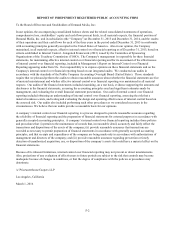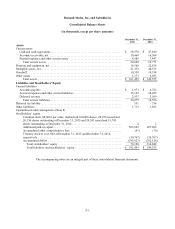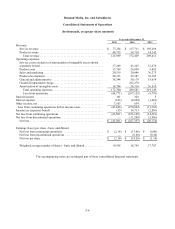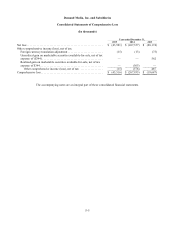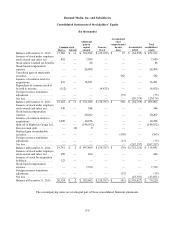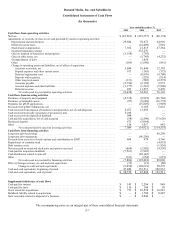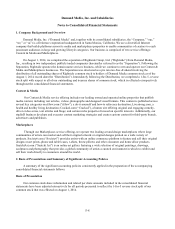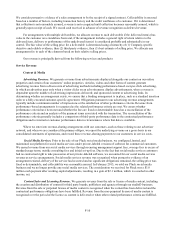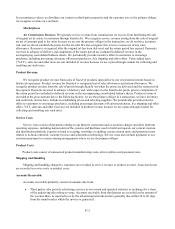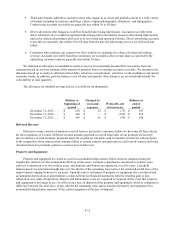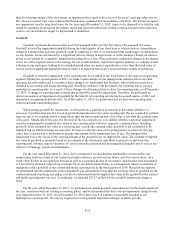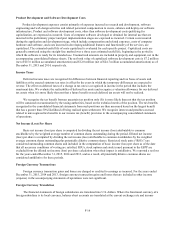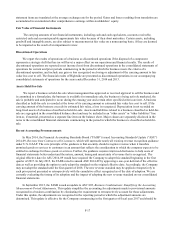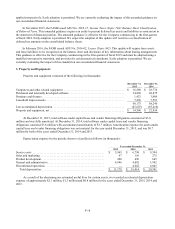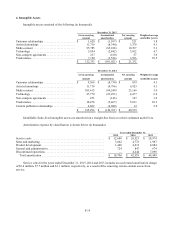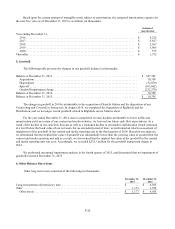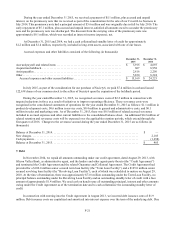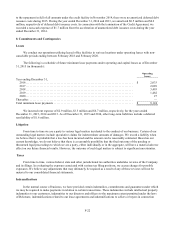Enom 2015 Annual Report Download - page 76
Download and view the complete annual report
Please find page 76 of the 2015 Enom annual report below. You can navigate through the pages in the report by either clicking on the pages listed below, or by using the keyword search tool below to find specific information within the annual report.
F-12
x Third party brands, publishers, and advertisers who engage us to create and publish content in a wide variety
of formats including text articles and blogs, videos, original photography, slideshows, and infographics.
Content sales accounts receivable are generally due within 30 to 60 days;
x Direct advertisers who engage us to deliver branded advertising impressions. Accounts receivable from
direct advertisers are recorded at negotiated advertising rates (customarily based on advertising impressions)
and as the related advertising is delivered over our owned and operated websites. Direct advertising accounts
receivable are generally due within 30 to 60 days from the date the advertising services are delivered and
billed;
x Customers who syndicate our content over their websites in exchange for a share of related advertising
revenue. Accounts receivable from these customers are recorded as the revenue share as reported by the
underlying customers and are generally due within 30 days.
We maintain an allowance for doubtful accounts to reserve for potentially uncollectible receivables from our
customers based on our best estimate of the amount of probable losses in existing accounts receivable. We determine the
allowance based on an analysis of historical bad debts, advertiser concentrations, advertiser credit-worthiness and current
economic trends. In addition, past due balances over 60 days and specific other balances are reviewed individually for
collectability at least quarterly.
The allowance for doubtful account activity is as follows (in thousands):
Balance at
Charged to
Balance at
beginning of
costs and
Write-offs, net
end of
period
expenses
of recoveries
period
December 31, 2015 ....
$
218
$
52
$
(73)
$
197
December 31, 2014 ....
$
340
$
—
$
(122)
$
218
December 31, 2013 ....
$
369
$
61
$
(90)
$
340
Deferred Revenue
Deferred revenue consists of amounts received from or invoiced to customers before we have met all four criteria
for the recognition of revenue. Deferred revenue includes payments received from sales of our products on Society6
prior to delivery of such products; payments made for original art and prints sold via Saatchi Art that are collected prior
to the completion of the return period; amounts billed to custom content customers prior to delivery of content; and sales
of subscriptions for premium content or services not yet delivered.
Property and Equipment
Property and equipment are stated at cost less accumulated depreciation. Depreciation is computed using the
straight-line method over the estimated useful lives of the assets. Computer equipment is amortized over three years,
software is amortized over two to three years, and furniture and fixtures are amortized over five years. Leasehold
improvements are amortized straight-line over the shorter of the remaining lease term or the estimated useful lives of the
improvements ranging from one to ten years. Upon the sale or retirement of property or equipment, the cost and related
accumulated depreciation or amortization is removed from our financial statements with the resulting gain or loss
reflected in our results of operations. Repairs and maintenance costs are expensed as incurred. In the event that property
and equipment is no longer in use, we will record a loss on disposal of the property and equipment, which is computed as
difference between the sales price, if any, and the net remaining value (gross amount of property and equipment less
accumulated depreciation expense) of the related equipment at the date of disposal.


